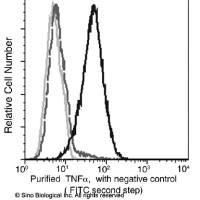The hematopoietic system is highly proliferative in the bone marrow (BM) due to the short half-life of granulocytes and platelets in the blood. Analysis of cell cycling and cell proliferation in vivo in specific populations of the mouse BM has highlighted some key properties of adult hematopoietic stem cells (HSCs). For instance, despite their enormous proliferation and repopulation potential, most true HSC are deeply quiescent in G0 phase of the cell cycle and divide very infrequently, while less potent lineage-restricted progenitors divide rapidly to replace the daily consumption of blood leukocytes, erythrocytes, and platelets. In response to stress, e.g., following ablative chemotherapy or irradiation, HSC must enter the cell cycle to rapidly repopulate the BM with progenitors. Due to their extreme rarity in the BM, at least five color flow cytometry for cell surface antigens has to be combined with staining for DNA content and nuclear markers of proliferation to analyze cell cycle and proliferation of HSC in vivo. In this chapter, we describe two methods to stain mouse HSC to (1) distinguish all phases of the cell cycle (G0 , G1 , S, and G2 /M) and (2) analyze the divisional history of HSC in vivo by incorporation of the thymidine analog 5-bromo-2-deoxyuridine.






